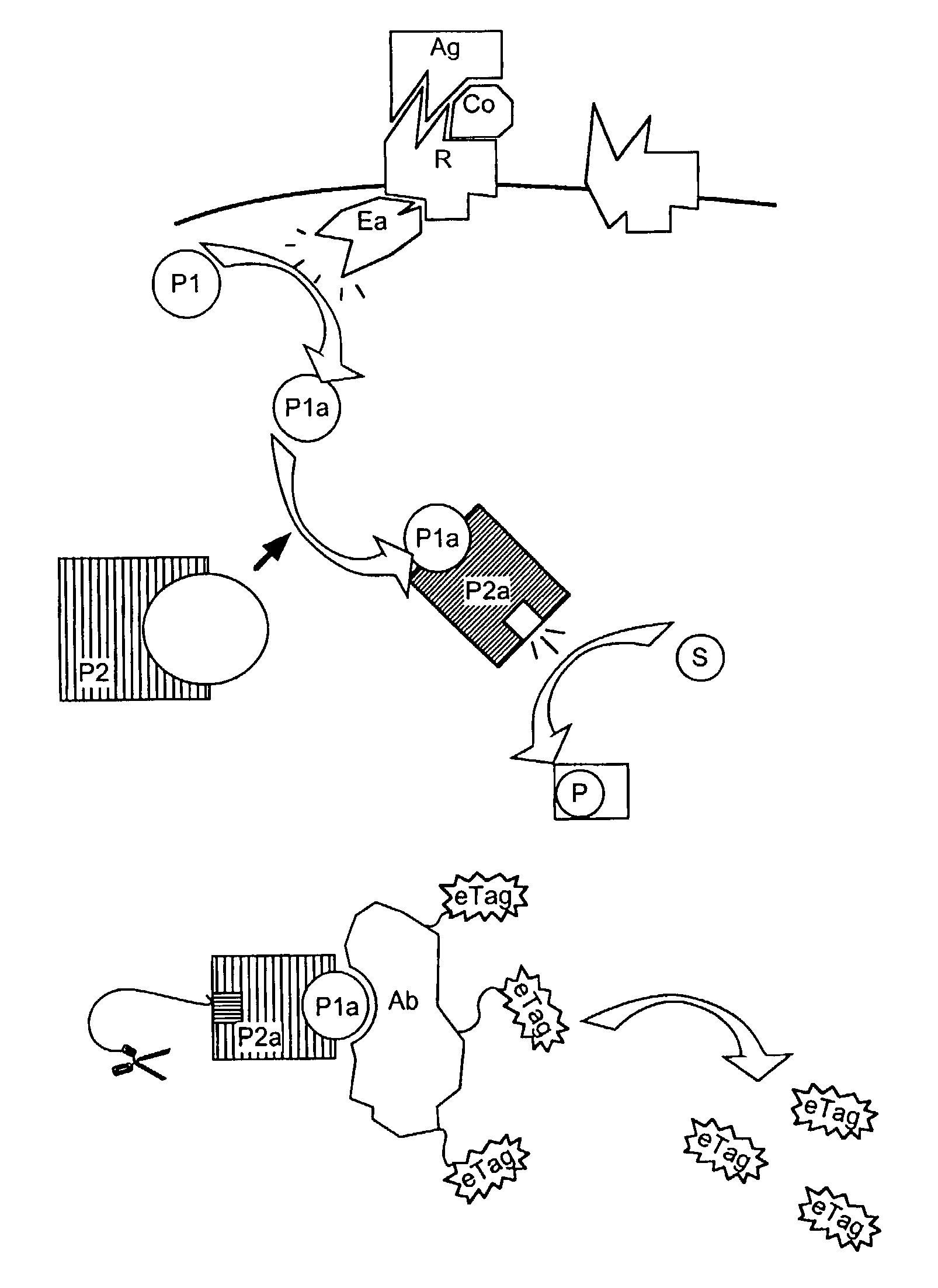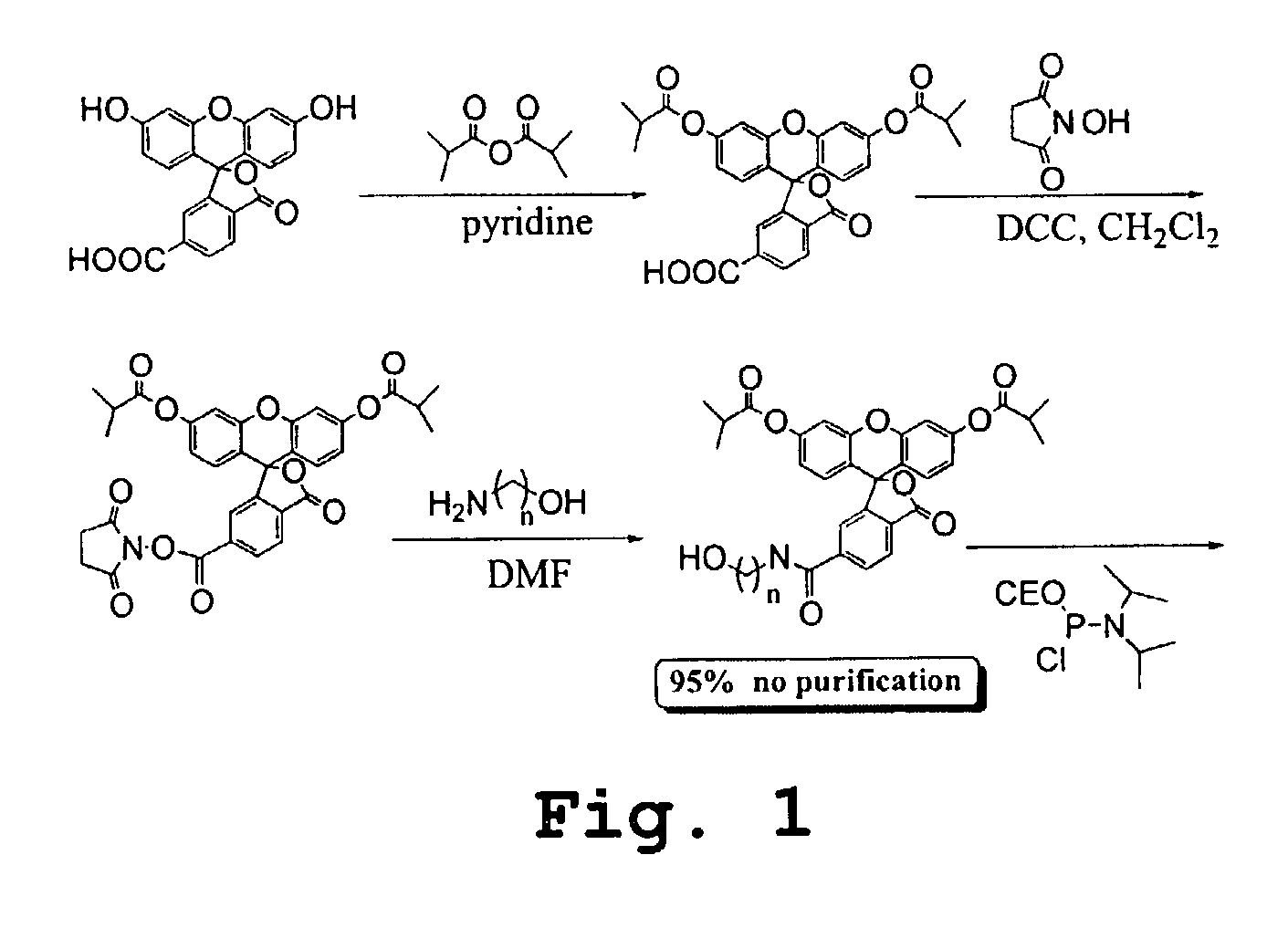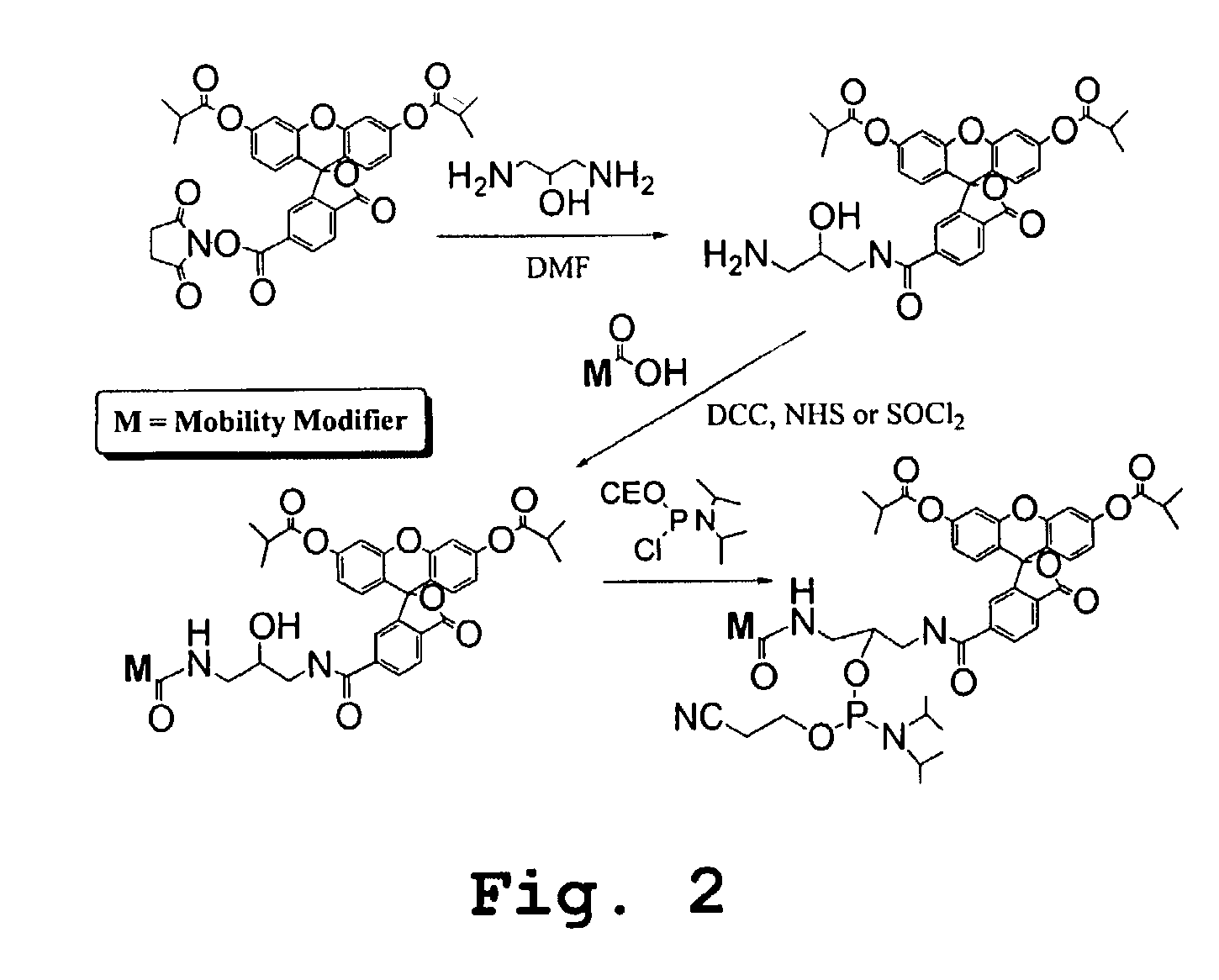Analyzing phosphorylated proteins
- Summary
- Abstract
- Description
- Claims
- Application Information
AI Technical Summary
Benefits of technology
Problems solved by technology
Method used
Image
Examples
example 1
e-Tag Reporter Assay for Protein Analysis
A. Labeling of Aminodextran (MW ˜500,000) with an e-tag Moiety and Biotin
[0239]Aminodextran was used as a model for demonstrating e-tag reporter release in relation to a high molecular weight molecule, which also serves as a model for proteins. The number of amino groups for 10 mg aminodextran was calculated as 2×10−8 moles. For a ratio of 1:4 biotin to e-tag moiety, the number of moles of biotin NHS ester employed was 1.85×106, and the number of moles of maleimide NHS ester was 7.4×10−6.10.9 mg of aminodextran was dissolved in 6 mL of 0.1% PBS buffer. 10 mg of Biotin-x-x NHS ester and 23.7 mg of EMCS were dissolved together in 1 mL of DMF and added in 50 μL portions at 30 min intervals to the aminodextran solution while it was stirring and keeping away from the light. After the final addition of the DMF solution, the mixture was kept overnight (while stirring and away from the light). Then, the mixture was dialyzed using a membrane with a mo...
example 2
e-tag Reporter Assay for Protein Analysis
A. Conjugation of e-tag Moieties to Antibodies.
[0246]Two different approaches for conjugation were employed. The first approach involved the direct attachment of e-tag moieties to the antibody, and the second approach involved attachment of e-tag moieties to dextran that was then attached to the antibody.
(A1) Direct Conjugation of e-tag Moieties to Antibodies.
[0247]E-tag moieties were synthesized with an NHS ester end that reacted with primary amines of the antibody to form a stable amide linkage. This resulted in a random attachment of e-tag moieties over the surface of the antibody. Modification with up to 6 to 12 NHS ester containing molecules per antibody molecule typically results in no decrease in antigen binding activity. Even higher ratios of NHS ester to antibody are possible with only slight loss of activity.
Protocol
[0248]1. Purified human IgG (purchased from Sigma-Aldrich) was diluted to 2 mg / ml in 1×PBS (0.1 M sodium phosphate, 0....
PUM
| Property | Measurement | Unit |
|---|---|---|
| Mass | aaaaa | aaaaa |
| Molecular weight | aaaaa | aaaaa |
| Electrophoretic | aaaaa | aaaaa |
Abstract
Description
Claims
Application Information
 Login to View More
Login to View More - R&D
- Intellectual Property
- Life Sciences
- Materials
- Tech Scout
- Unparalleled Data Quality
- Higher Quality Content
- 60% Fewer Hallucinations
Browse by: Latest US Patents, China's latest patents, Technical Efficacy Thesaurus, Application Domain, Technology Topic, Popular Technical Reports.
© 2025 PatSnap. All rights reserved.Legal|Privacy policy|Modern Slavery Act Transparency Statement|Sitemap|About US| Contact US: help@patsnap.com



